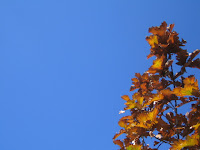HY decided that we should do the tourist thing while we are still in Beijing, so we brought out our cameras, and Jen & I went along on a pedi-cab tricycle ride around the Hutongs of Beijing at Hou Hai.
Price was pretty steep at about RMB180 per person to go on one of these official rides. There are also locals trying to hawk their rides for only about RMB50-70, but they will only take you on a 15-30mins ride around the Hou Hai area. We got to see more with the official programme - rode around the back alleys of the Hutongs to see the real life of Beijingers, and even went in to visit one of the old courtyard houses to chat with the residents. We also scaled the steep steps up to the old bell tower at Nan Luo Gu Xiang, we also visited the Gong Qing Wang wangfu and were treated to a traditional chinese tea brewing session and tea sampling. In the evening, we decided to walk around the Hou Hai area and the Yan(1) Tai(4) Jie(1), soaking in the bustling activities of the residents doing all different trades and houseworks!
Here are some notes on Beijing Hutong:Hutong is a unique form of community that exists only in China. "Hutong" literally means a small street or a lane between two courtyards. There are thousands of hutongs in Beijing City. Surrounding the Forbidden City, many were built during the Yuan (1206-1341), Ming(1368-1628) and Qing(1644-1908) dynasties. In the prime of these dynasties the emperors, in order to establish supreme power for themselves, planned the city and arranged the residential areas according to the etiquette systems of the Zhou Dynasty. The center of the city of Beijing was the royal palace -- the Forbidden City.
One kind of hutongs, usually referred to as the regular hutong, was near the palace to the east and west and arranged in orderly fashion along the streets. Most of the residents of these hutongs were imperial kinsmen and aristocrats. Another kind, the simple and crude hutong, was mostly located far to the north and south of the palace. The residents were merchants and other ordinary people.
The main buildings in the hutong were almost all quadrangles--a building complex formed by four houses around a quadrangular courtyard . The quadrangles varied in size and design according to the social status of the residents.
The big quadrangles of high- ranking officials and wealthy merchants were specially built with roof beams and pillars all beautifully carved and painted, each with a front yard and back yard. However, the ordinary people's quadrangles were simply built with small gates and low houses. hutongs, in fact, are passageways formed by many closely arranged quadrangles of different sizes. The specially built quadrangles all face the south for better lighting; as a result, a lot of hutongs run from east to west. Between the big hutongs many small ones went north and south for convenient passage.
Other thoughts:Never a person to be fond of any trips to China in the past. If not for my job, I probably would still not have visited China! But my impression of China has changed completely since I arrived. Exploring around the old Beijing - Lao(2) Bei(3) Jing(1), the love for the country and culture has already been seeded in me. Somehow, I believe we are brought here for such a time as these. Not only what China has to offer us in terms of economic growth and business/job opportunities,
but what can we offer to China and her people? 


















